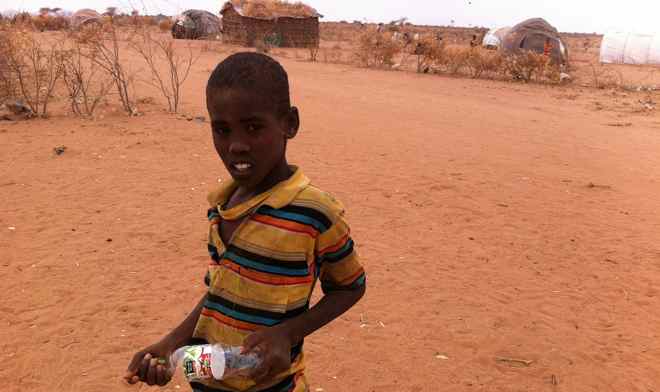A group of U.S. and Canadian scholars, food activists, and leaders of organizations addressing hunger recently published Framing Hunger (FH), a document highlighting their concerns regarding the U.N. Food and Agriculture Organization’s (FAO) influential report: The State of Food Insecurity in the World 2012 (SOFI12). FAO’s annual report guides the food security agenda worldwide, and can profoundly impact public opinion and policy.
SOFI12 affirms that the world is progressing satisfactorily toward hunger reduction. But FH argues the report inaccurately casts a “generally positive light on global hunger reduction” that could actually halt advancement. FH points out three main concerns: the use of an aggregated view of hunger that misrepresents the nature of the hunger challenge; failure to define and communicate hunger as it is commonly understood by the public; and offering a broad policy direction with an inaccurate emphasis on economic growth.
First, by using a sweeping, largely positive frame on hunger, the report obscures critical details, such as how inequitable the gains have been. Since 1990, SOFI12 reports a “marked global advance in reducing the prevalence of hunger until the recession began in 2007.” According to FH however, advances in hunger reduction in China and Viet Nam account for the vast majority of worldwide progress. In fact, 91 percent of the net numerical reductions in undernourished people globally come from these two countries alone. Furthermore, FH argues, the report could easily lead readers to believe that if the world simply returned to pre-recession growth trends, it would be on target to meet hunger reduction goals. FH asserts that communicating a disaggregated view of food insecurity in the world would help prioritize a much-needed analysis of the extreme unevenness of progress, as well as highlight important lessons, from countries making the greatest headway.
Second, SOFI12 puts the number of hungry people at 868 million, a number now widely cited throughout the media. The estimate however, is based on a caloric threshold that is below the minimum required to maintain a sedentary lifestyle and the condition must last more than one year. FH asserts that this surely underestimates hunger as commonly understood. Furthermore, the report acknowledges, “many poor and hungry people are likely to have livelihoods involving arduous manual labor.” In fact, as FH points out, it is commonly estimated that three-quarters of the world’s hungry live in rural areas where most people are farmers and/or day laborers– hardly sedentary work. FAO’s definition of hunger is thus misleading at best, as it fails to properly encapsulate the large number of people living non-sedentary lives. Furthermore, when presenting global hunger figures, FH encourages the FAO to consider presenting the extent of hunger as an estimated range, currently between 868 million and 1.33 billion.
Lastly, SOFI12 declares the importance of economic growth in alleviating hunger, without presenting sufficient evidence. FH argues that the growth narrative is not backed by data in the report. Indeed, half-way through the SOFI12, the reader learns, “linkage between economic growth and nutrition has been weak…” And, according to FAO , one of the best way to advance hunger reduction is to pair economic growth with a number of purposeful actions including: creating equitable access to resources, empowering women, and improving social protection systems and governance systems.













